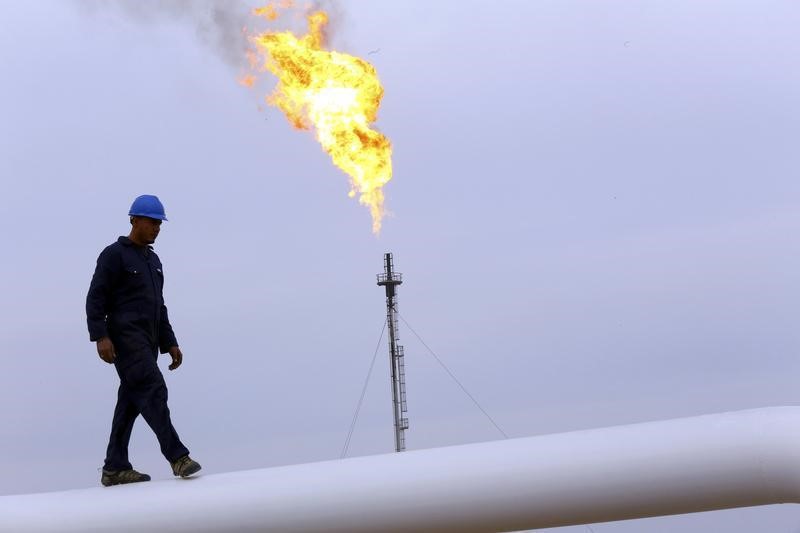Investing.com - Oil prices fell on the last day of 2019, but still rounded the year out with the biggest annual gains in three. A rebound forecast in U.S. shale crude production could, however, pose greater challenges for the market in 2020.
New York-traded West Texas Intermediate, the U.S. crude benchmark, settled down 62 cents, or 1.0%, at $61.06 per barrel. Despite that drop, WTI rose 11% for December, its largest monthly gain since January.
London-traded Brent, the global oil benchmark, settled down 67 cents, or 1%, at $66.65 per barrel. Notwithstanding Tuesday’s slide, the U.K. crude standard settled up 7% for December, its largest monthly advance since April.
For the year, WTI rose 34% while Brent had a 24% gain, the biggest annual gains since 2016 for both benchmarks.
Oil’s 2019 rally was largely helped by production cuts carried out by OPEC. Since January, the Saudi-led OPEC, joined by its ally Russia under the OPEC+ alliance, has tried to observe a daily production cut of 1.2 million barrels. In December, as that arrangement was about to expire, OPEC+ said it would deepen those cuts to 2.1 million barrels per day from the start of 2020.
Despite its plan for stiffer production cuts, OPEC+ could have a tougher time keeping oil prices up in 2020 as U.S. shale oil output could rebound next year, some long-time traders in oil said.
While U.S. crude production as a whole hit a record high of 12.9 million barrels per day in 2019, shale oil output, which accounts for more than half of U.S. total production, has been somewhat restrained this year. U.S. crude producers as a whole cut the number of actively-operating oil rigs in the country to 677 this year from 885 at the end of 2018, a drop of 208 rigs, or 24%.
“The main reason for the 24% cutback in actively-drilling U.S. oil rigs this year was the price uncertainty that persisted midyear,” said John Kilduff, founding partner at New York energy hedge fund Again Capital. WTI hovered between $50 and $55 during most of the summer months, weighing on the broader oil market.
Kilduff said with the OPEC decision to double down on production cuts taking effect only in early December, it will take U.S. drillers some time to turn their spigots back on in full and plow ahead with production.
“With oil prices being the way they are, one can bet on more challenges ahead for production,” Kilduff added. “WTI at above $60 is very, very remunerable to U.S. shale. OPEC will have to take a lot more off the market to face that wall of shale supply headed the global market's way.”
Non-OPEC oil supply, led by the U.S. shale, is forecast to grow by 2.1 million barrels a day in 2020, according to the Paris-based International Energy Agency (IEA).
Global demand for oil, meanwhile, is set to increase by 1.2 million barrels a day next year, the EIA said.
That means the world will need 900,000 fewer barrels of oil every day from both OPEC and non-OPEC producers alike, a situation that could sharply offset OPEC+ production cuts.
For the bulls, the coming year may still have a positive start from the phase one of the U.S.-China trade deal, which, according to a tweet by President Donald Trump on Tuesday, will be signed on Jan. 15. Yet, the positive impact of that deal could just be fleeting if U.S. crude production starts ramping up strongly.
